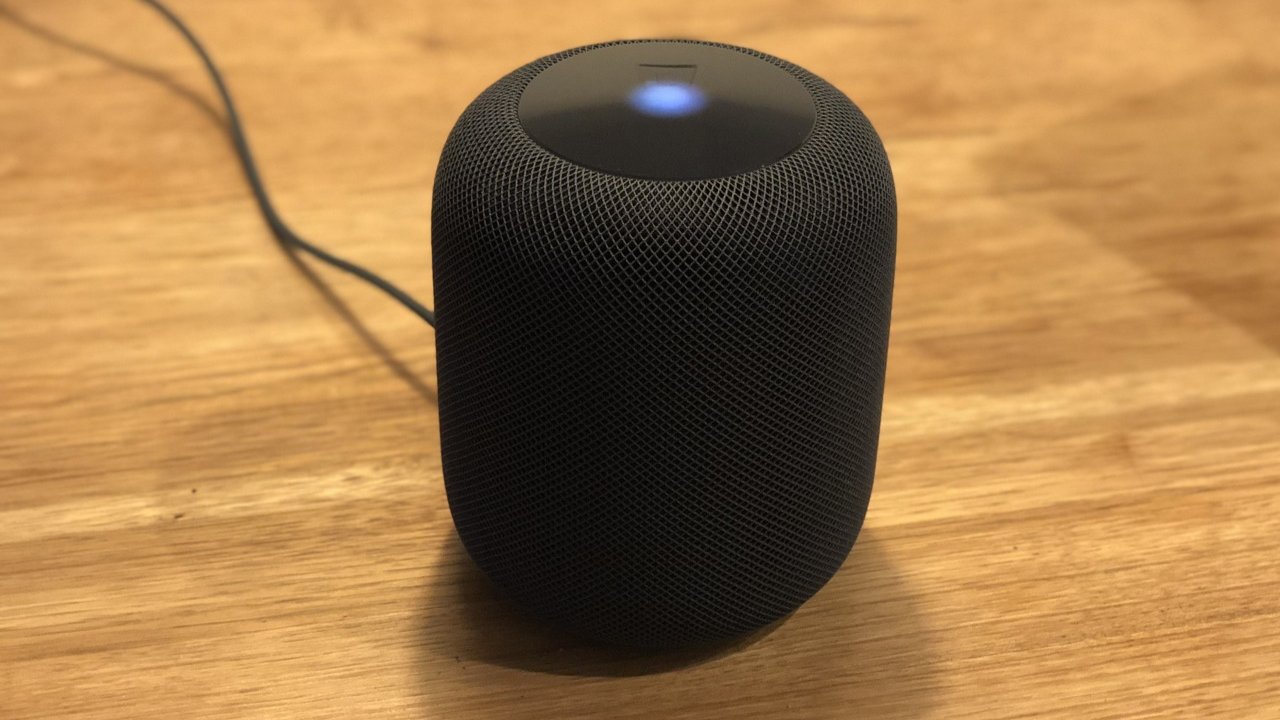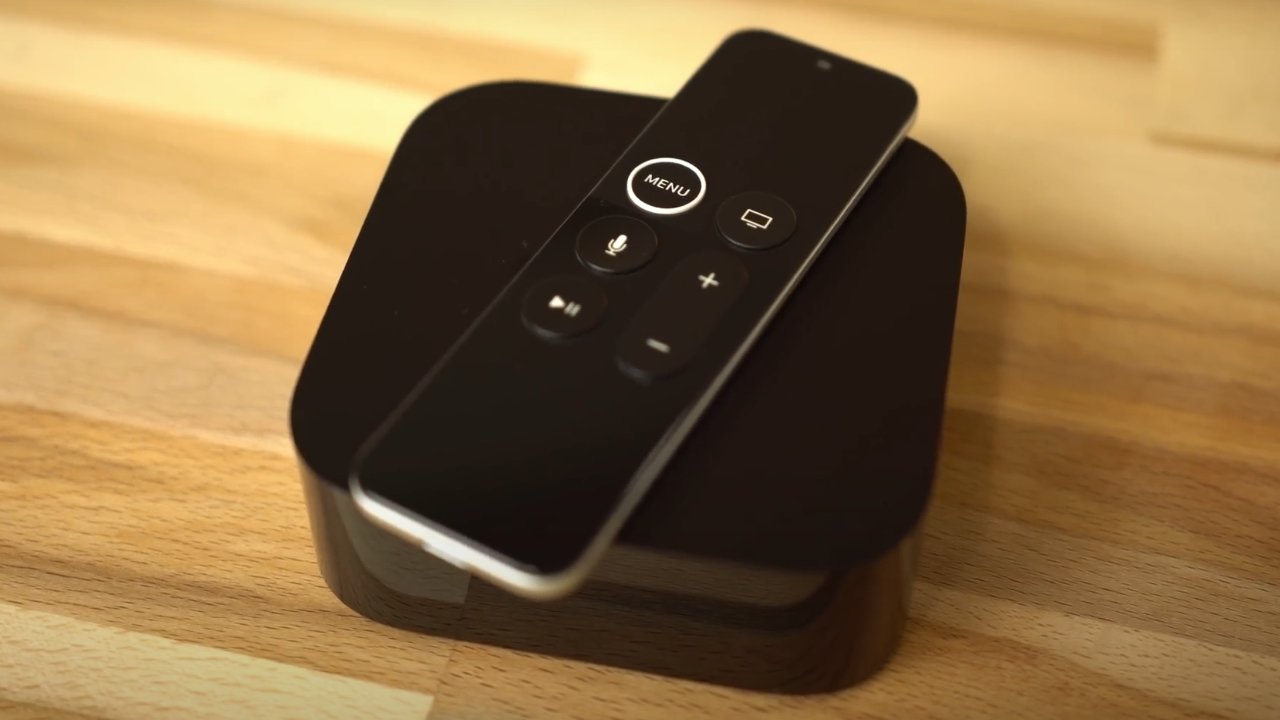If Apple is going to release a HomePod-like product with a display, it needs to do more than sound good and look nice. We examine some long-time rumors and the features Apple should incorporate to make a truly standout device.
Apple discontinued the original HomePod, but that doesn't mean the entire lineup is dead. The HomePod mini is alive and well, and Apple could be developing more smart home devices based on the bones of the original HomePod.
A report from Bloomberg on Monday morning suggested that Apple has been working on different home devices in various form factors — specifically ones with displays and cameras. Apple iterates on several versions of prospective products in secret before choosing a version to release.
The report also mentioned an updated HomePod was expected for 2022 but may have been canned due to HomePod's cancellation.
Since Apple's entry into the smart speaker market after competitors Amazon, Facebook, and Google, there has been speculation about a possible HomePod with a screen. Monday's report has sparked renewed interest in such a device, so let's examine what this device could ultimately be and what functions it should incorporate to be as much as it can be to as wide an audience as possible.
Apple's current Home Hubs
While we'll be talking more about HomeKit in a bit, in short, to get the most out of Apple's home automating HomeKit, you need a Home Hub. In short, this is a dedicated device, in the home, that is the central spoke in the wheel that is the smart home. Without a Home Hub, you can't control HomeKit peripherals outside of the home.
Apple sells three device categories that can act as a Home Hub — the Apple TV, the HomePod, and the iPad. Each of these devices offers an overlapping set of features that would be useful in a single product.
| Features | HomePod | iPad | Apple TV | HomeHub |
|---|---|---|---|---|
| Multi-user | Yes | No | Yes | Yes |
| Display | No | Yes | Yes (via HDMI) | Yes |
| Multiple mics | Yes | No | No | Yes |
| Always on | Yes | No | Yes | Yes |
| Contains sensitive information | No | Yes | No | No |
The HomePod
Users can command the HomePod to play music, control their home, send messages, or provide information via voice. There is no dedicated display for HomePod, but some features can be controlled via devices like an iPhone, iPad, or Mac.
The benefits of owning a HomePod include excellent room-filling audio and voice commands for HomeKit actions. Apple hoped this would be enough to justify the $350 price, but ultimately it was deemed too expensive and saw a price cut to $299 before its ultimate discontinuation in March 2021.
The HomePod's limitations are related to its form factor. It has no display, nor can it throw content to other displays. In most situations, users would be better off getting information from Siri on their iPhone where the data is displayed and can be referenced.
The iPad
Using an iPad is often a suggestion for fixing the limitations with HomePod, but this presents a new set of problems. For example, which family member would log in with their Apple ID, leave it unlocked, or share the passcode? This concern alone leads to a host of privacy and security-related problems. Creating a fake Apple ID isn't always an option since some families may already have six members.
Like HomePod, the iPad is great as a Home Hub since it can be placed anywhere. However, due to the iPad's portable and personal nature, users may not want to have a dedicated iPad restricted to a wall or counter-top.
The iPad also doesn't have as many microphones as the full-size HomePod and won't listen for alternate voices. There is also the issue of the internal battery wearing down or screen burn-in. An "Apple HomeHub" tabletop device would address an always-on display in software where the iPad doesn't make those considerations.
Apple could solve the iPad problem by adding multi-user support. This would enable authentication systems like Touch ID or Face ID to work across users of the device. The option of adding Apple Watch unlock to the iPad for family members would require each member to have their watch attached to the iPad.
The Apple TV
The Apple TV 4K and Apple TV HD can both function as Home Hubs. They need a TV to display information and can be placed anywhere you'd want a display.
The tvOS software enables multi-user support and makes finding media simple. HomeKit has a presence here as well with HomeKit Camera integration and Scene controls.
The Apple TV cannot listen for voice commands by itself, and can only receive voice or touch commands via the Siri Remote. There are no microphones in the Apple TV hardware.
Users cannot access sensitive data or login information when browsing the Apple TV. Only relevant apps are available, and purchases can be hidden behind a password.
A hybrid Home Hub solution
Each of Apple's Home Hubs has strengths and weaknesses based on their form factors. Apple could benefit from offering a new product within the Home Hub category that combines the best of each.
The hybrid "HomeHub" would be similar to the HomePod by being a dedicated speaker with excellent sound, have a display similar to an iPad, and show apps and data via tvOS.
The current HomePod and HomePod mini run tvOS. This means they already have the frameworks required to display the tvOS interface, apps, and features.
Apple could add features like iMessage and FaceTime to the "HomeHub." Code was discovered by MacRumors in tvOS showing that Apple has added FaceTime and iMessage frameworks, along with a new AVFCapture framework related to capturing images.
After authenticating a specific user via biometrics, passcode, or Apple Watch, the "HomeHub" would enable access to features like FaceTime or iMessage for a particular user. Otherwise, the hub would only display HomeKit controls and a screensaver.
All of these things add up to a compelling new device that would compete with similar offerings from Amazon and Google.
About HomeKit...
A recent report cites home automation control as one of the most significant driving factors of smart displays in the home, with it expected to continue to grow by more than 30 percent over the next few years.
Google markets its own smart display under its Nest brand, dubbing it the Nest Hub. The latest version of the device was just released in March 2021, with even more improvements to the smart home.
Amazon has its own smart display and an army of third-party Alexa-enabled smart displays that work similarly with Alexa-approved smart home devices.
As it stands, there is no smart display available that is able to control HomeKit devices. Some devices, such as Hue bulbs, work with Alexa and Google Assistant and the Amazon and Google smart displays by extension. Still, devices that solely support HomeKit — such as Eve and Logitech devices — are left in the cold.
This creates a hole for HomeKit users who have to then choose between jumping ship to Amazon Alexa or Google Assistant and abandoning HomeKit and Siri or creating their own from an iPad on a stand. But as we discussed — the entry-level iPad has sub-par speakers and no dashboard user interface suitable for a central home command center.
Dedicated HomeKit control
A proper Apple smart display could embrace control of HomeKit devices, act as a Home Hub, and possibly even open a new category for third-party HomeKit devices.
As a HomeKit Home Hub, it could work similarly to a HomePod or Apple TV. It would be responsible for controller your HomeKit Secure Video cameras, providing remote access to your devices, and acting as a border router for your Thread devices.
As it stands, third-party devices have no access to HomeKit camera feeds and aren't able to control HomeKit devices outside the limited support for buttons. Ring and August users can have their Brilliant smart wall panel display who is at their door. Brilliant can control your Hue bulbs, your shade, your Sonos speakers, and can even show in the Home app as a switch, but is unable to control HomeKit-specific devices.
If Apple explored this route, it could unlock this ability for third-party products such as Brilliant and allow them to see your cameras as well as control your HomeKit devices.
This route would give us a real Apple smart display with full support and control for your HomeKit devices, a live view of your camera feeds, as well as unlock new features for third-party HomeKit devices.
The Apple smart home is only just beginning
Apple hasn't given up on the smart home yet. HomeKit devices are becoming more widely available, and the addition of Thread makes things work even better.
In 2019 it was reported that Apple was hiring more personnel for the HomeKit team. Apple's product timelines usually extend out about two years, so expect announcements from this renewed initiative soon.
Apple needs to release new products to compete in the home. Be it an "Apple TV 6" or "HomeHub," something needs to change the customer's perspective in order to get traction in the space.
Stay on top of all Apple news right from your HomePod. Say, "Hey, Siri, play AppleInsider," and you'll get latest AppleInsider Podcast. Or ask your HomePod mini for "AppleInsider Daily" instead and you'll hear a fast update direct from our news team. And, if you're interested in Apple-centric home automation, say "Hey, Siri, play HomeKit Insider," and you'll be listening to our newest specialized podcast in moments.
 Wesley Hilliard and Andrew O'Hara
Wesley Hilliard and Andrew O'Hara













-m.jpg)






 Malcolm Owen
Malcolm Owen
 William Gallagher
William Gallagher



 Wesley Hilliard
Wesley Hilliard

 Christine McKee
Christine McKee



-m.jpg)




29 Comments
i would love a low cost dock that you can plug in an old iPhone or iPad in and make it into a Video HomePod
The first step is to fix Apple Music. The search is broken, the folder management is incomplete, the suggestions don’t make sense and, it’s really unstable. Second step...Siri is the dumbest one. Not fixing those two things will make nothing will work properly.
And i would make all the components of the Apple Home including the central hub as a mesh wifi node. I still think Apple made a mistake by not acquiring Eero.